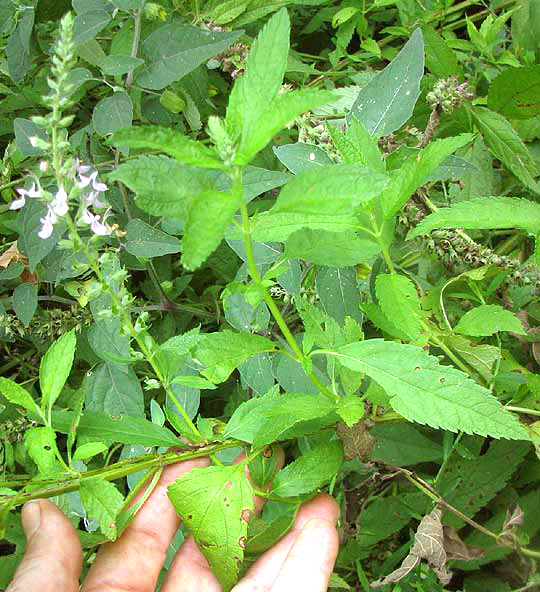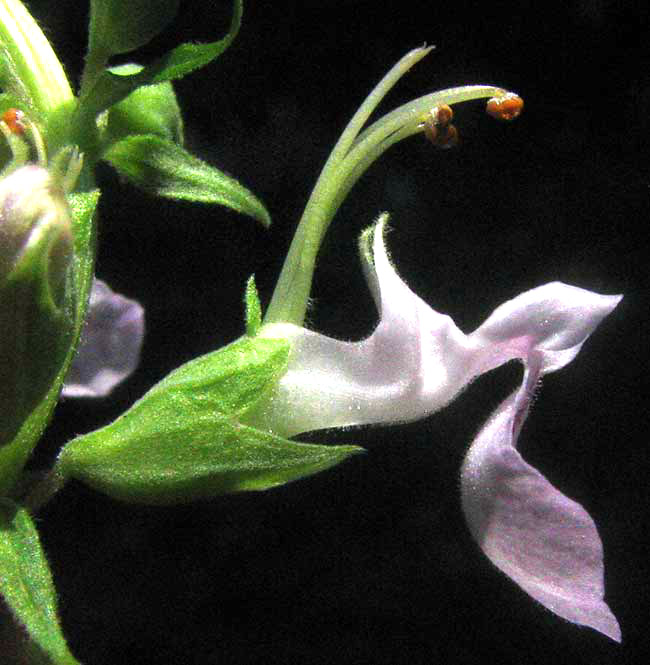Excerpts from Jim Conrad's
Naturalist Newsletter
from the August 19, 2012 Newsletter issued from the woods of the Loess Hill Region a few miles east of Natchez, Mississippi, USA
WOOD SAGE
At weedy edges of bottomland and swamp woods nowadays a certain robust, waist high herb is issuing exotic-looking flowers. The blossoms are arranged in pale, spikelike racemes that show up vividly against the dark green woods. You can see a typical inflorescence arising from a leafy stem below:

A side view of one of its unusual flowers is shown below:

This wildflower is good to know because it's so widely distributed -- found throughout nearly all of forested North America, into Mexico and Cuba -- and it flowers appear during that super-green, in-between season when it's too late for spring wildflowers and too early for fall ones. Because this herb is so widely distributed it goes by several names, including Wood Sage, Germander, Canada Germander, American Germander, Hairy Germander, and Wild Basil. It's TEUCRIUM CANADENSE, and if you know your herbs and wildflowers you'll have recognized from the plant's flower anatomy, its tooth-margined (serrated), opposite leaves and its squared stems that Wood Sage is a member of the Mint Family, the Lamiaceae.
The flowers are adapted to pollination by long-tongued bees, including bumblebees, honeybees, as well as by bee flies, thick-headed flies, and various butterflies or skippers.
Wood Sage reminds us that all mint species don't necessarily produce "minty-smelling" herbage. Wood Sage's leaves smell mildly foul, with no hint of mintiness.
Web pages dealing with medicinal plants copy from one another the mind-numbing sentence "A tea made from the leaves is diaphoretic, diuretic and emmenagogue," but in general nowadays Wood Sage isn't regarded as being particularly medicinal. It's just nice to see, and it makes pollinators happy, and their predators.